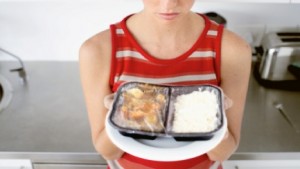Which Frozen Dinners Can Help You Lose Weight?
 You probably know that fresh food is a better wellness option than frozen, but seeing as you are, in fact, human, you might not always be able to whip up something organic, weight reducing and wellbeing-boosting after a long, hard day so seeing as frozen food is still better than cracking out the takeaway menu, which ones are the best choices?
You probably know that fresh food is a better wellness option than frozen, but seeing as you are, in fact, human, you might not always be able to whip up something organic, weight reducing and wellbeing-boosting after a long, hard day so seeing as frozen food is still better than cracking out the takeaway menu, which ones are the best choices?
Not all frozen meals are any better than heading to the drive-thru, and require a little consideration at the supermarket in order to reveal satisfying and healthy options. Firstly, many frozen meals aren’t filling enough at 8 or 9 ounces, and this will just make you snack later so look for meals that are between 10 and 12 ounces. However, consider the meal itself too, as an 8 ounce bean and cheese burrito will still have more protein than a 10 ounce pasta dish, so you’ll be more satisfied. Smaller meals can be good, healthier options, on the other hand, if you prepare a side dish of vegetables to eat alongside it.
When it comes to ingredients, you want a high quality and a low quantity. In general, the fewer ingredients, the better it is for you so avoid meals with dozens of listed ingredients that you can’t pronounce. Complicated names are often assigned to preservatives and chemicals, and the first few ingredients are the most prominent in the dish, so if you’re considering a pasta dish with vegetables, for example, look for whole-wheat flour to be listed first instead of white flour. Also, are the vegetables listed near the top of the list, or do they fall behind less healthy items like oil and sugar?
Calorie content is also an important consideration, and how much you require is dependent on your sex, activity level and weight goals so consult your doctor to determine your target calorie intake for dinner. Generally, this falls between 400 and 600 calories, but you should only get around 175 of these calories from fat. Speaking of fats, avoid any meals labelled with ‘partially hydrogenated’ fat as these refer to trans fats, which are bad for your heart. The same goes for foods high in sodium, and you should forgo meals with any more than 600 milligrams of this. Finally, remember that you want as much protein, calcium, fibre and vitamins noted on the label as possible, and your frozen meal shouldn’t require you to add any extra oil – baking or even microwaving is better than frying.


Comments are closed.